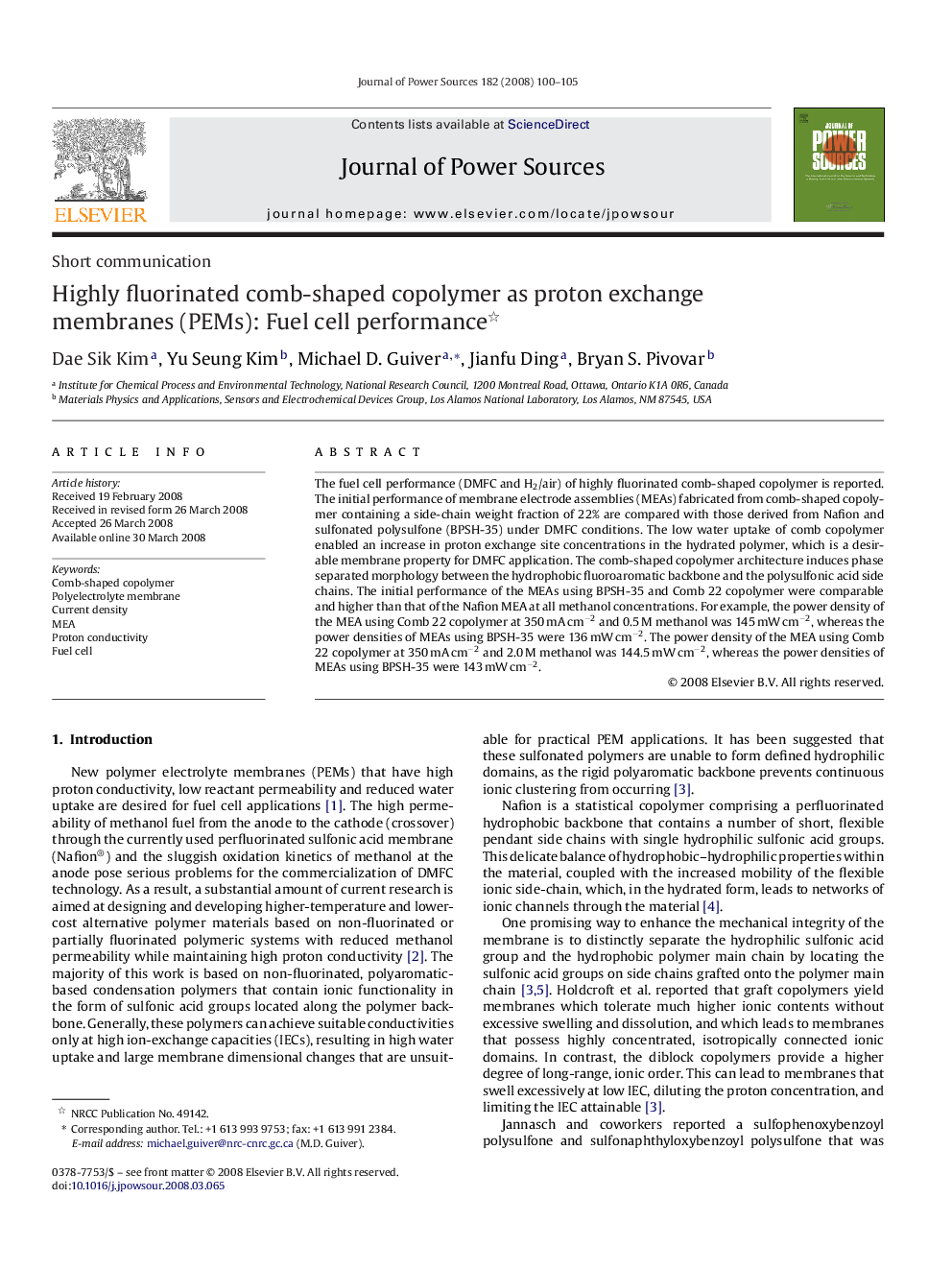| Article ID | Journal | Published Year | Pages | File Type |
|---|---|---|---|---|
| 1290273 | Journal of Power Sources | 2008 | 6 Pages |
Abstract
The fuel cell performance (DMFC and H2/air) of highly fluorinated comb-shaped copolymer is reported. The initial performance of membrane electrode assemblies (MEAs) fabricated from comb-shaped copolymer containing a side-chain weight fraction of 22% are compared with those derived from Nafion and sulfonated polysulfone (BPSH-35) under DMFC conditions. The low water uptake of comb copolymer enabled an increase in proton exchange site concentrations in the hydrated polymer, which is a desirable membrane property for DMFC application. The comb-shaped copolymer architecture induces phase separated morphology between the hydrophobic fluoroaromatic backbone and the polysulfonic acid side chains. The initial performance of the MEAs using BPSH-35 and Comb 22 copolymer were comparable and higher than that of the Nafion MEA at all methanol concentrations. For example, the power density of the MEA using Comb 22 copolymer at 350Â mAÂ cmâ2 and 0.5Â M methanol was 145Â mWÂ cmâ2, whereas the power densities of MEAs using BPSH-35 were 136Â mWÂ cmâ2. The power density of the MEA using Comb 22 copolymer at 350Â mAÂ cmâ2 and 2.0Â M methanol was 144.5Â mWÂ cmâ2, whereas the power densities of MEAs using BPSH-35 were 143Â mWÂ cmâ2.
Related Topics
Physical Sciences and Engineering
Chemistry
Electrochemistry
Authors
Dae Sik Kim, Yu Seung Kim, Michael D. Guiver, Jianfu Ding, Bryan S. Pivovar,
